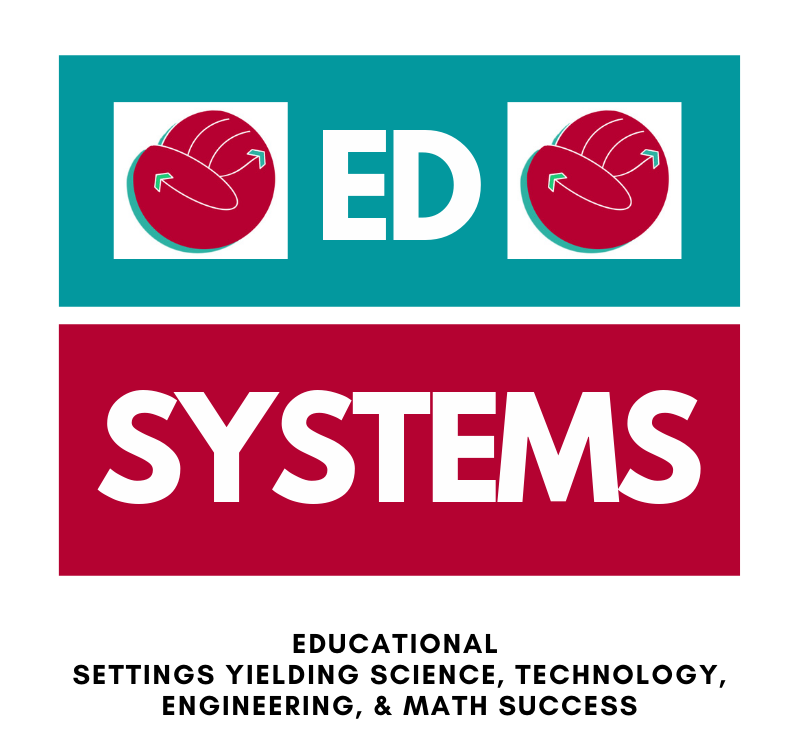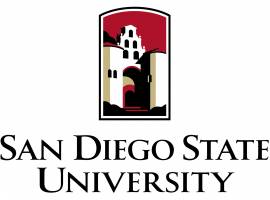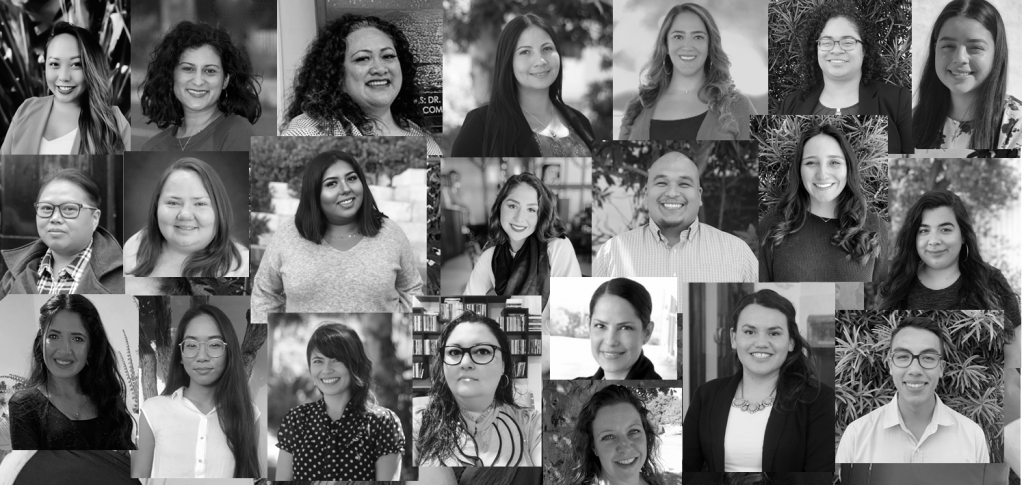
PROJECT PURPOSE
Community colleges and Minority Serving Institutions, including Hispanic Serving Institutions (HSIs), provide several pathways and linkages to the STEM pipeline and are key access points to postsecondary education for underrepresented racially minoritized students, specifically African Americans, American Indians, and Latinos. Student mobility and transitions across institutions are key factors to consider in assessing STEM degree pathways. This study seeks to examine STEM pathways for students who begin at community colleges, with a specific emphasis on URM students, student mobility across multiple institutions, and the role of HSIs. The research findings will provide a better understanding of how to assess STEM outcomes and hold potential to transform the structure and processes that underlie STEM postsecondary trajectories to promote racial equity and broaden participation in STEM.
An integrated mixed methods approach utilizing multiple membership random effect modeling, social network analysis, and digital narratives, with both national and regional data, will provide a fine-grained and nuanced examination of the barriers and opportunities to STEM presented by individual characteristics and institutional contexts for URM students who may navigate STEM pathways across several institutions. The following research purposes will be addressed: 1) identify STEM student mobility patterns, showing the links between institutions and how these links impact students, 2) utilize advanced statistical techniques that account for student mobility across colleges to examine the student characteristics, college experiences, and institutional contexts that contribute to STEM outcomes, and 3) qualitatively deepen and clarify findings from the large scale data analysis to generate insights on students’ lived experiences.


Funded by:
San Diego State University Division of Research Affairs University Grant Program (UGP)
National Science Foundation:
ED-SYSTEMS (DUE-1644990)
Our Research Team

Principle investigator: Dr. Felisha Herrera Villarreal

Under the leadership of PI, Dr. Felisha Herrera Villarreal, and postdoctoral research fellow, Dr. Victoria Rodriguez-Operana, the ED-SYSTEMS project involved a team of graduate and undergraduate research analysts. RES-ISTE Team bios are available here.
Project Accomplishments
ED-SYSTEMS Digital Narratives
2017
Herrera, F, Kovats Sánchez, G., & Navarro, M. (2017, March). Advancing Latinx Students in STEM Pathways within Hispanic Serving Institutions. American Association for Hispanics in Higher Education (AAHHE), Irvine, CA.
Herrera, F., Navarro, M., & Kovats Sánchez, G.(2017, April). Advancing Underrepresented Students’ STEM Career Pathways within Diverse Institutional Contexts. American Educational Research Association (AERA), San Antonio, TX.
Herrera, F., Kovats Sánchez, G., & Rodriguez-Operana, V.C. (2017, October). RES-ISTE STEM Panel. Hispanic Association of Colleges and Universities (HACU) Youth Leadership Development Forum for Students in STEM, San Diego, CA.
Herrera, F., & Rodriguez-Operana, V.C. (2017, November). Supporting the Success of Underrepresented Minorities in STEM Fields: The Role of Institutional Agents in Higher Education. National Association of Student Personnel Administrators (NASPA), Honolulu, HI.
MEDIA COVERAGE
2018
Herrera, F.A., *Kovats Sánchez, G., *Navarro, M., & *Zeldon, M. J. (2018). Latinx students in STEM college pathways: A closer look at diverse pathways through Hispanic Serving Institutions (HSIs). In T. T. Yuen, E. Bonner, & M. G. Arreguín-Anderson (Eds.), (Under)Represented Latin@s in STEM: Increasing Participation Throughout Education and the Workplace. New York: Peter Lang Publishing.
Herrera, F. (2018, June). STEM Community College Pathways. UCLA Community College Studies Conference, Los Angeles, CA. See recorded presentation.
Herrera, F.A., Rodriguez-Operana, V.C., Kovats Sanchez, G., Wolfgramm, M., & Romero, A. (2018, May). The Role of 2- & 4-Year Hispanic Serving Institutions. Digital narrative presented online at the National Science Foundation 2018 STEM for All Video Showcase: Transforming the Educational Landscape.
Herrera, F., Villarreal, A., Kovats Sánchez, G. (2018, April). Navigating Latinx STEM Career Pathways. American Educational Research Association (AERA), New York, NY.
MEDIA COVERAGE
October 2, 2018: Research to Support Latino Students in STEM
September 5, 2018: Smoothing Pathways for STEM Students
August 23, 2018: CSU Wins $10M to Support Latino STEM Education
August 8, 2018: NSF announces first research awards under Hispanic-Serving Institutions Program
August 2, 2018: Research and Equity Scholarship Institute’s Digital Narratives featured in SDSU’s Informed & Inspired
2019
Garibay, J. C., Herrera, F.A., Garcia, G. A., & Johnston, M. P. (2019). Powerful Incidents or Set in Their Views? Campus Racial Incidents, Hate Crimes, and White Male and Female Students’ Racial Attitudes. Journal of Higher Education. 1st tier (7 % acceptance, multiple blind reviews) Impact Factor. 2.283; Eigenfactor Score: 0.00165; Article Influence Score: 0.796
Rodriguez-Operana, V.C., Herrera, F.A., Kovats Sanchez, G., Cerrillos, A., & Marquez, B. (2019, May). Women of Color Navigating HSI STEM Transfer Pathways. Digital narrative presented online at the National Science Foundation 2019 STEM for All Video Showcase: Innovations in STEM Education.
Wolfgramm, M., & Herrera, F. (2019, May). Diverse Students Countering STEM Disciplinary Culture. National Conference on Race & Ethnicity (NCORE), Portland, OR.
Herrera, F.A., Rodriguez-Operana, V.C., Kovats Sanchez, G., Cerrillos, A., & Marquez, B. (2019, April). “It was hard, and it still is…”: Women of Color Navigating HSI STEM Transfer Pathways. Paper presented at the American Educational Research Association (AERA) Annual Meeting, Toronto, ON, CA.
Rodriguez-Operana, V.C., Herrera, F.A., Romero, A., & Wolfgramm, M. (2019, March). Cultivating Community for Underrepresented STEM Majors at Hispanic-Serving Institutions through Campus Support Programs and Institutional Agents. Paper presented at the National Association of Student Personnel Administrators (NASPA) Annual Conference, Los Angeles, CA.
Herrera, F.A., Rodriguez-Operana, V. C., Romero, A., Wolfgramm, M., Gaskin, D., & Marquez, B. (2019, March). Voices of Underrepresented Students of Color in STEM: Student Mobility through Community Colleges and Hispanic- Serving Institutions. Paper presented at the Council for the Study of Community Colleges (CSCC) Annual Conference, San Diego, CA.
REGIONAL COLLABORATIVE SESSIONS
May 2019: STEM Regional Collaborative Session at San Diego City College
August 2019: HSI-STEM Pathways Regional Collaborative Session for students, faculty, staff and administrators in the San Diego Community College District.
2020
Herrera, F. A., & Rodriguez-Operana, V. C. (2020). A national portrait of STEM trajectories through two- and four-year Hispanic Serving Institutions. Hispanic Educational Technology Services, XI (Fall 2020), 7–33.
Herrera, F.A., Rodriguez-Operana, V.C., & Wolfgramm, M. (2020, March). Two-Year STEM Pathways and Transitions across Minority Serving Destinations. Presented online at the National Association for Research in Science Teaching (NARST) Annual International Conference.
Herrera, F., & Kovats Sánchez, G. (2020, November). Reconsidering Cultural Knowledge and Networks in STEM: Mexican American Transfer Pathways at Hispanic Serving Institutions in the US/Mexico border region. Association for the Study of Higher Education (ASHE).
Herrera, F. (2020).Hispanic Serving Institutions: STEM Transitions, Experiences, and Mobility. CSU-STEM Net Webcast.
REGIONAL COLLABORATIVE SESSIONS
Summer 2020 STEM Collaborative Session at St. Mary’s College
Fall 2020 Regional Collaborative Session at San Diego Community College District
Latinx Heritage Month Collaborative Session at San Diego Mesa College
NSF Project Outcomes Report
To access our ED-SYSTEMS NSF Project Outcomes report, please visit: research.gov.
Under NSF Award Highlights, click on: Research Spending & Results
Federal Award ID Number: 1644990
PI: Felisha A Herrera Villarreal
Abstract at the Time of Award
Community colleges and Minority Serving Institutions, including Hispanic Serving Institutions (HSIs), provide several pathways and linkages to the STEM pipeline and are key access points to postsecondary education for underrepresented racial minorities (URM), specifically African Americans, American Indians, and Latinos. Student mobility and transitions across institutions are key factors to consider in assessing STEM degree pathways. This study seeks to examine STEM pathways for students who begin at community colleges, with a specific emphasis on URM students, student mobility across multiple institutions, and the role of HSIs. The research findings will provide a better understanding of how to assess STEM outcomes and hold potential to transform the structure and processes that underlie STEM postsecondary trajectories to promote racial equity and broaden participation in STEM. An integrated mixed methods approach utilizing multiple membership random effect modeling, social network analysis, and digital narratives, with both national and regional data, will provide a fine-grained and nuanced examination of the barriers and opportunities to STEM presented by individual characteristics and institutional contexts for URM students who may navigate STEM pathways across several institutions. The following research purposes will be addressed: 1) identify STEM student mobility patterns, showing the links between institutions and how these links impact students, 2) utilize advanced statistical techniques that account for student mobility across colleges to examine the student characteristics, college experiences, and institutional contexts that contribute to STEM outcomes, and 3) qualitatively deepen and clarify findings from the large scale data analysis to generate insights on students lived experiences.
Publications Produced as a Result of this Research
Note: When clicking on a Digital Object Identifier (DOI) number, you will be taken to an external site maintained by the publisher. Some full text articles may not yet be available without a charge during the embargo (administrative interval). Some links on this page may take you to non-federal websites. Their policies may differ from this site.
Herrera, F.A. “A National Portrait of STEM Trajectories Through Two- and Four-Year Hispanic Serving Institutions" HETS ONLINE JOURNAL, v.XI, 2020, p.. doi:https://doi.org/ Citation details
Zeledón-Pérez, M. J. “Bridging Success for STEM Students of Color: Factors that Predict Interactions with Institutional Agents at Community Colleges HSI and Non-HSI." JOURNAL OF APPLIED RESEARCH IN THE COMMUNITY COLLEGE, v.26, 2019, p.. Citation details
Project Outcomes Report
Disclaimer: This Project Outcomes Report for the General Public is displayed verbatim as submitted by the Principal Investigator (PI) for this award. Any opinions, findings, and conclusions or recommendations expressed in this Report are those of the PI and do not necessarily reflect the views of the National Science Foundation; NSF has not approved or endorsed its content.
The Research & Equity Scholarship Institute on Student Trajectories in Education (RES-ISTE) at San Diego State University (SDSU) undertook the ED-SYSTEMS (Educational Settings Yielding Science, Technology, Engineering, & Math Success) project. This project investigated diverse STEM pathways, particularly for historically underrepresented minoritized students who began at community colleges, transferred to four-year universities, and attended Hispanic Serving Institutions (HSIs). Three overarching outcomes of this multifaceted, comprehensive study that reflect the intellectual merit and broader impacts are 1) a complete portrait of STEM student trajectories through tracking longitudinal data, 2) a nuanced account of the experiences of STEM students through qualitative data, and 3) inquiry based collaboration with institutions to inform STEM efforts regionally.
1. This study provided a national portrait of STEM student mobility by not only examining the upward transfer of community college students, but a variety of attendance patterns. This is significant because within the two-year sector students have higher rates of multiple institution attendance, yet we often examine student outcomes and trajectories in isolation. Utilizing longitudinal data, we were able to identify and compare mobility trends among STEM community college students, as well as explore the differences across gender, race, and other groups, and institution types (i.e, HSI status). While controlling for student mobility, we examined STEM student outcomes, which continued to demonstrate disparities across gender and race; therefore, illuminating the need to consider the multiple intersecting identities of minoritized STEM students. The data highlighted the important role that two-year HSIs play in providing access to STEM higher education for first-generation college students, women, Latinx, and other racially minoritized and underrepresented groups. Furthermore, differences in student outcomes across HSIs and non-HSIs at both the two- and four-year levels were observed.
2. Considering that student mobility is often localized and most prevalent in geographical contexts where students have access to multiple institutions within driving distance, our study explored the nuanced trajectories of students across HSIs regionally. We noted greater co-enrollment and multiple institution attendance patterns within districts, yet enrollment across districts was also common. Students noted class availability, compatible schedules, available resources (including STEM resources) and information gained through peer networks, among other factors, which influenced their enrollment decisions. Our study focused on students who had successfully navigated four-year transfer; therefore, many attributed their success to their persistence in seeking out information and support from a variety of sources. Students often relied on transfer support from targeted programs that provided additional services for specific populations on campus. However, students noted a need for STEM specific information about the transfer process and requirements to be centralized and accessible to both students and counselors to avoid miscommunication and misinformation. Students emphasized the value of specialized STEM programs that provided support to navigate STEM disciplinary culture and further develop their identities as STEM professionals, along with offering targeted advising and STEM research and internship opportunities. Given students’ perspectives on the challenges within STEM disciplinary culture, institutions and key individuals involved on campus (e.g., faculty, counselors, administrators, program staff) must reconsider the impacts of interactions with STEM students, approaches to learning in STEM courses (i.e., collaboration vs. competition and isolation), and incorporate culturally validating pedagogy that centers the cultural values, knowledge, and experiences of students. The findings underscore the benefits of these campus efforts, and simultaneously draw attention to the need for collaboration between organizations to create more targeted support systems for minoritized students in STEM.
3. Overall, findings and insights from ED-SYSTEMS informed the learning outcomes and activities for our dissemination efforts and collaborative sessions with our regional partners. While we disseminated our study results widely and held sessions nationally, we prioritized engagement with regional HSI partners to share important research findings and identify ways to utilize this information to collectively address and directly impact policy and practice in STEM, particularly focused on the critical transitions across two- and four-year institutions. To engage STEM education faculty, staff, and administrators at our partnering institutions, we worked with college professional learning coordinators and STEM departments to understand the existing challenges that persist for Latinx and other underrepresented minoritized students in STEM, as well as opportunities for enhancing system-wide support across institutions.
ED-SYSTEMS advances the field’s knowledge about diverse STEM educational trajectories, by highlighting students’ voices and using a range of quantitative and qualitative methods at the national and regional levels. Findings have been shared broadly through professional and academic conferences, peer reviewed journals, book chapters, reports, digital narratives, and professional learning courses and workshops for community college and university STEM educators. For more information about ED-SYSTEMS project results, as well as our other NSF-funded projects that continue to advance our understandings of diverse STEM trajectories through community colleges and Hispanic Serving Institutions, please visit our website: https://res-iste.sdsu.edu/.
